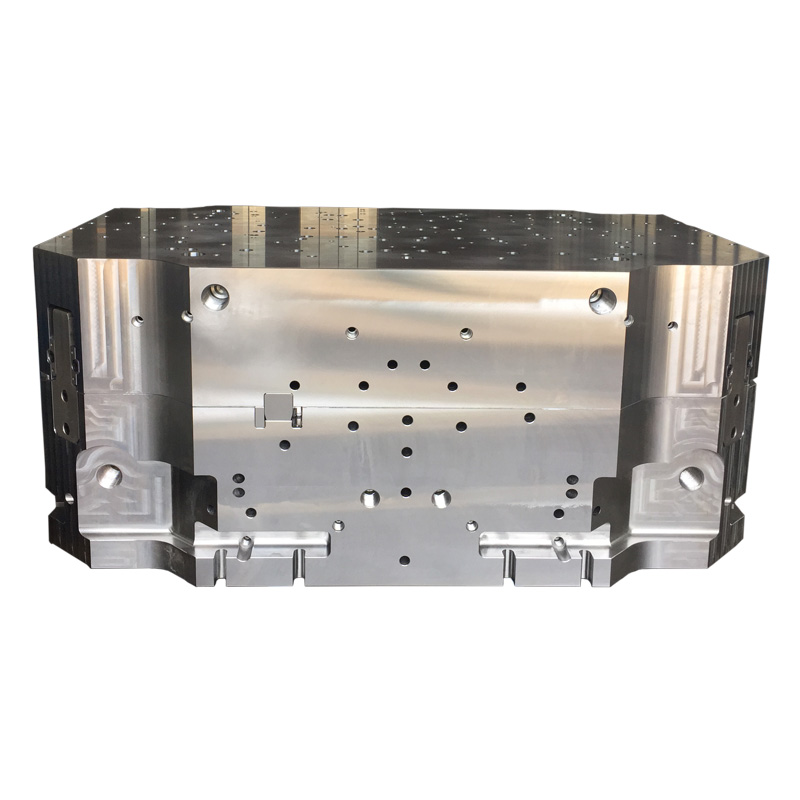
The unsung hero of the injection molding process, the mould base, plays a critical role in shaping plastic parts. This intricate assembly provides the foundation and framework for the entire mould, ensuring precise alignment, efficient operation, and ultimately, high-quality plastic products. Let's delve into the key components of a mould base and understand their individual functions:
Fixed Clamping Plate: This mould base component, as the name suggests, firmly holds the fixed side of the mould against the fixed platen of the injection molding machine. It acts as a sturdy anchor, ensuring the mould remains stable during the high-pressure injection process.
Locating Ring: Precision is paramount in injection molding. The locating ring, nestled within the fixed clamping plate of the mould base, plays a vital role in achieving this. It precisely centers the mould with the injection machine's nozzle, guaranteeing perfect alignment between the sprue bushing (discussed later) and the nozzle, allowing for smooth molten plastic flow.
Fixed Cavity Plate: This mould base component serves as the foundation for the fixed half of the mould cavity. It securely houses the fixed cavity block, leader pins/bushings, and the sprue bushing. The fixed cavity block defines the negative shape of the plastic part to be molded.
Movable Cavity Plate: Mirroring the fixed cavity plate, the movable cavity plate on the opposite side of the mould base holds the movable cavity block, leader pins/bushings. This allows for the creation of a complete mould cavity when the two halves are pressed together.
Movable Clamping Plate: Just like its fixed counterpart, the movable clamping plate securely fastens the movable side of the mould to the movable platen of the injection molding machine. This ensures the mould remains securely closed during the entire molding process.
Spacer Block: This mould base component plays a crucial role in creating space within the movable side of the mould. Positioned between the movable clamping plate and the movable cavity plate, the spacer block allows for the movement of the ejector plate (discussed later) during the part ejection process.
Ejector Retainer Plate: Another key component of the mould base, the ejector retainer plate acts as a secure holder for the ejector pins and return pins. These pins play a vital role in ejecting the finished plastic part from the mould cavity.
Ejector Plate: Imagine a powerful hand pushing the molded part out of the mould. That's precisely the function of the ejector plate within the mould base. Mounted onto the ejector retainer plate, it houses the ejector pins and return pins. When activated, the ejector plate pushes these pins, effectively removing the molded part from the cavity.
Support Pillars: For additional stability and support, especially on the movable side of the mould base, support pillars are strategically placed between the spacer blocks. These pillars help distribute pressure evenly and prevent warping during the high-pressure molding process.
Sprue Bushing: This mould base component acts as a funnel, guiding the molten plastic from the injection machine's nozzle into the runner system of the mould. The sprue bushing features a tapered hole that facilitates the smooth flow of plastic.
Leader Pins and Bushings: Precision alignment is essential for a perfectly formed plastic part. Leader pins and bushings within the mould base achieve this by ensuring the exact alignment between the fixed and movable halves of the mould during closure.
Cavity and Core: These terms define the mould components that create the final shape of the plastic part. There are two main methods for incorporating cavities and cores within a mould base:
Integrated: In this method, the molded part's shape is directly formed by the mould cavity itself.
Nested: This approach involves separate mould components forming the final part. Nested cavities and cores offer several advantages, including the ability to create complex geometries, improve processing efficiency, and allow for the selection of specialized materials for optimal wear resistance and temperature control. Additionally, with a nested design, damaged components can be replaced more easily and cost-effectively.
By understanding the functions of each component within the mould base, we gain a deeper appreciation for the intricate workings of the injection molding process. This seemingly simple assembly plays a critical role in transforming molten plastic into a vast array of products we encounter in everyday life.
